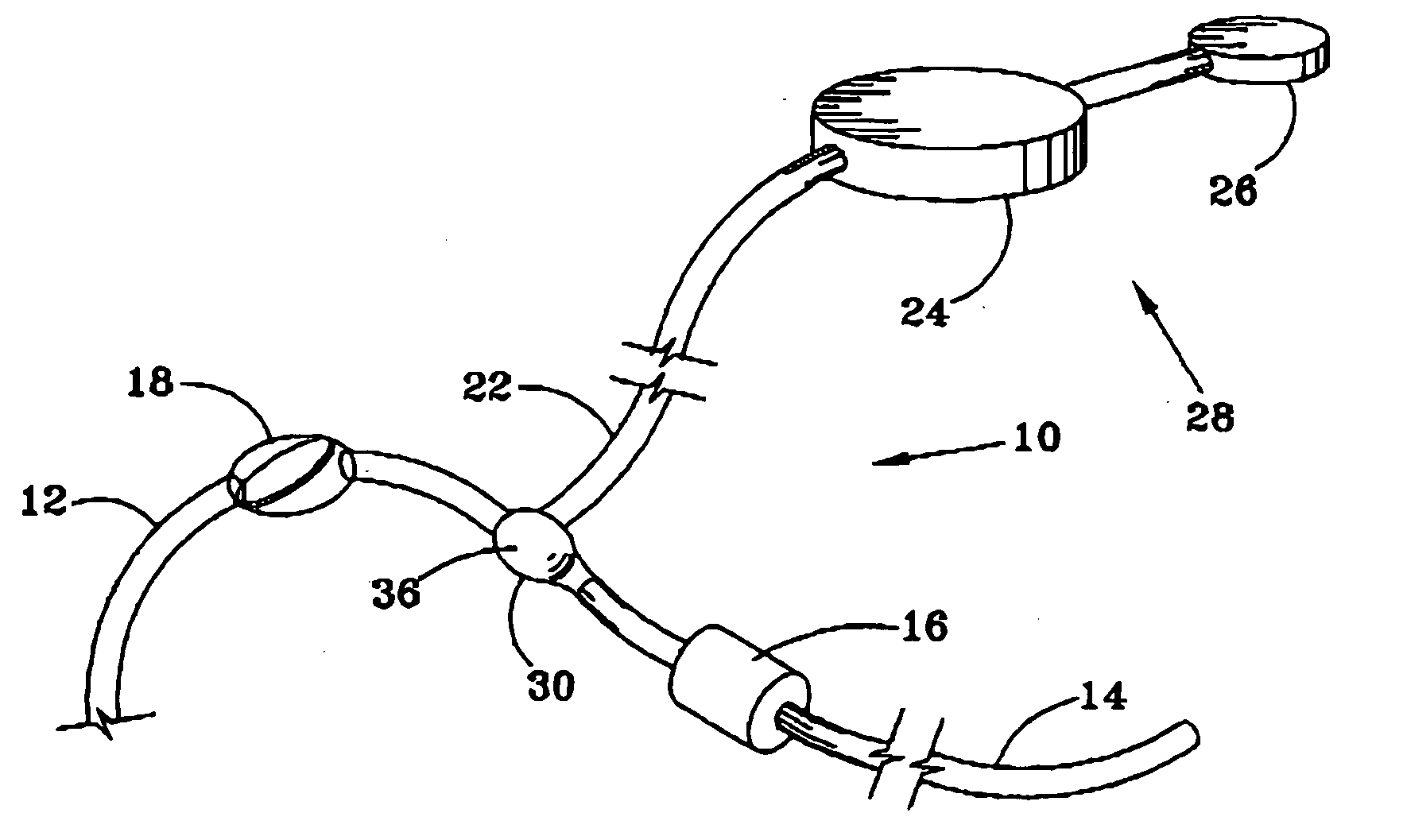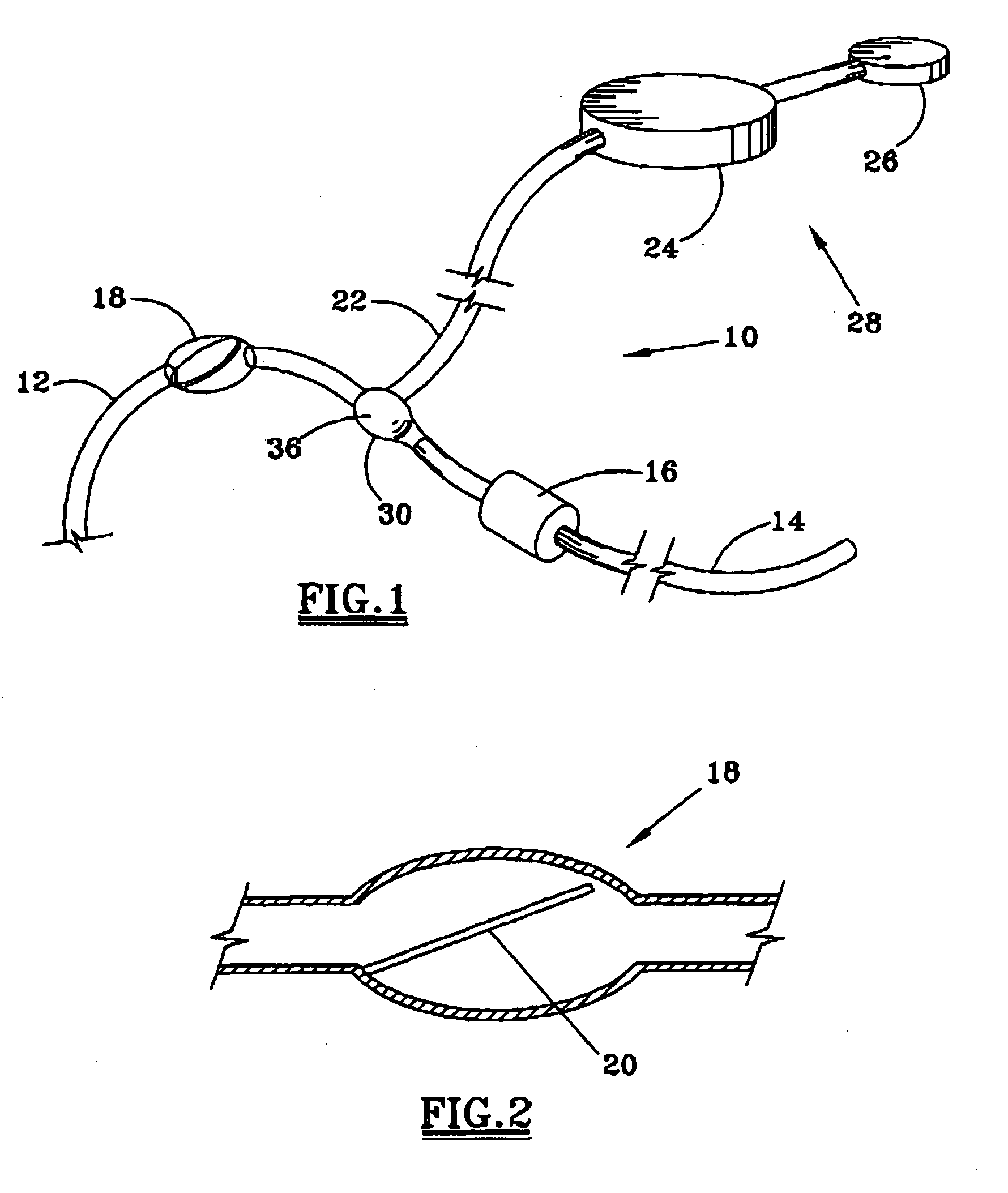Implantable shunt system and method
a shunt and implantable technology, applied in the field of implantable shunt systems and methods, can solve the problems of imbalance between production and absorption, high system pressure, and high shunt failure rate, and achieve the effect of preventing the high rate of shunt failur
- Summary
- Abstract
- Description
- Claims
- Application Information
AI Technical Summary
Benefits of technology
Problems solved by technology
Method used
Image
Examples
Embodiment Construction
[0021] The new shunt system 10 utilizes some of the components of existing shunt systems, namely a brain ventricular catheter 12, a distal or downstream catheter 14, and a regulating valve 16, and adds new components in order to overcome the problems particular to the patient population with significant blood in the CSF and its propensity for clogging existing shunt systems. The catheter 12 is positioned for draining fluid from the brain ventricle, and the distal catheter 14 passes the fluid to a selected terminus within the patient's system, such as the peritoneal cavity, the pleural cavity, the pleural cavity, or the blood circulation system. The shunt system function will be independent of the type of regulating valve mechanism utilized and therefore independent of the valve manufacturer. Each catheter preferably includes a sylastic tube.
[0022] In order to overcome the problem of the propensity for obstruction of the valve system with blood and debris, the blood is broken down p...
PUM
 Login to View More
Login to View More Abstract
Description
Claims
Application Information
 Login to View More
Login to View More - R&D
- Intellectual Property
- Life Sciences
- Materials
- Tech Scout
- Unparalleled Data Quality
- Higher Quality Content
- 60% Fewer Hallucinations
Browse by: Latest US Patents, China's latest patents, Technical Efficacy Thesaurus, Application Domain, Technology Topic, Popular Technical Reports.
© 2025 PatSnap. All rights reserved.Legal|Privacy policy|Modern Slavery Act Transparency Statement|Sitemap|About US| Contact US: help@patsnap.com


